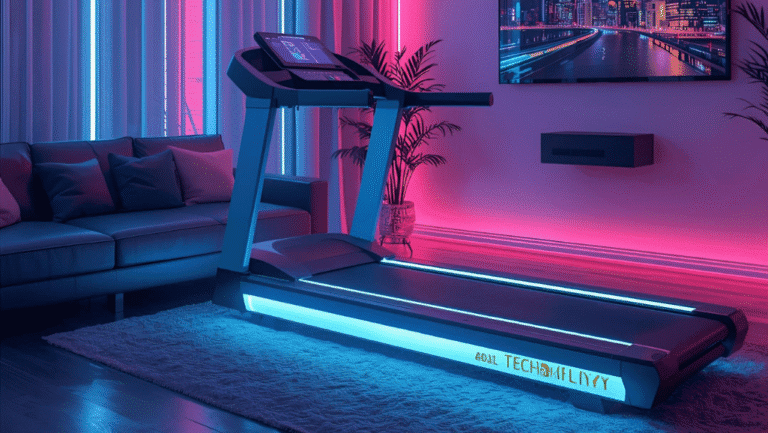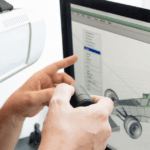The world of immersive technology is changing fast, thanks to virtual reality machines. These devices mix the real and digital worlds, giving users amazing experiences. They pull users into virtual places that feel real.
Virtual reality machines use top-notch tech to make 3D worlds feel real. They use special sensors and tracking to let users touch and move around in these worlds. This makes users feel like they’re really there, fully engaged.
The world of immersive experiences is changing fast. This is because of quick progress in augmented reality and spatial computing. As virtual reality machines get better, they will change how we see and interact with digital stuff.
Key Takeaways
- Virtual reality machines create immersive experiences by blending the physical and digital worlds
- Advanced hardware and software generate realistic 3D simulations for user engagement
- Sensors and tracking mechanisms enable interaction with virtual objects and navigation through immersive spaces
- Augmented reality devices and spatial computing technologies drive the rapid evolution of immersive experiences
- Virtual reality machines are set to transform how we interact with digital content and perceive the world
Introduction to Virtual Reality Machines
Virtual reality machines are changing how we interact with digital worlds. They use VR headsets, haptic feedback systems, and motion tracking sensors. These tools make experiences feel real, mixing the real and virtual.
Definition and Overview
Virtual reality (VR) creates a fake world where you feel like you’re somewhere else. There are three types: immersive, semi-immersive, and non-immersive. The most immersive ones, like the Meta Quest Pro VR, track your face and eyes for a mixed reality feel.
Historical Development
The idea of virtual reality started in the 1950s. But it really took off in the 1970s and 1980s. Back then, VR was used for medical, flight, car design, and military training.
By the late 1980s, VR became well-known thanks to Jaron Lanier and VPL Research.
Importance in Modern Technology
Now, VR machines are key in many fields, like gaming, education, and healthcare. Devices like the Samsung Gear VR and Meta Quest 2 let people enjoy immersive experiences at home. As tech gets better, VR’s uses will grow, with mixed reality platforms and haptic feedback systems leading the way.
Key Components of a Virtual Reality Machine
Virtual reality machines are complex systems. They need both hardware and software to create immersive experiences. These parts work together to take users into virtual worlds, making them feel like they’re really there.
Hardware Requirements
The hardware of a virtual reality machine is key for top-notch experiences. Some important parts include:
- High-resolution displays: These displays, found in VR headsets, give users clear, detailed visuals. They make virtual environments feel more real.
- Powerful processors: VR machines need strong processors. They handle the complex calculations needed to show virtual worlds in real-time.
- Motion sensors: Sensors like gyroscopes and accelerometers track user movements. They let the virtual environment respond naturally, making the experience more intuitive.
Software Infrastructure
While hardware is the base, software is just as important. Specialized software creates and manages virtual environments. It lets users interact with digital objects and characters. This software uses computer vision algorithms to understand user movements and gestures. This boosts the overall immersion.
Sensors and Tracking Mechanisms
VR machines rely on advanced sensors and tracking mechanisms for a true immersive experience. Components like cameras and inertial measurement units track the user’s position and orientation. They translate these movements into the virtual environment, creating a strong sense of presence. Users can explore and interact with digital worlds as if they were real.
As VR technology advances, these sensors and tracking mechanisms get more precise and responsive. This makes the line between virtual and physical reality even thinner.
Applications of Virtual Reality Machines
Virtual reality machines are now used in many fields, not just for fun. They help in gaming, education, and even in medical training. This technology changes how we learn, play, and heal.
Entertainment and Gaming
VR is big in gaming. It lets players dive into new worlds. They can play games that feel real, from action-packed adventures to calm explorations.
Education and Training
VR is changing education too. Students can join virtual classrooms from anywhere. They can learn by exploring places and doing experiments safely.
VR is also great for work training. It helps people in fields like manufacturing and aviation learn without risk. They can practice with real-life scenarios without the danger.
Healthcare and Therapy
VR is making a big impact in healthcare. It helps doctors practice surgeries and students learn without risk. It’s also used in therapy to help people overcome fears and PTSD.
VR therapy works by slowly exposing patients to things that scare them. This helps them learn to cope and feel stronger.
“Virtual reality has the power to change healthcare, from training to therapy.”
As VR gets better, it will be used in even more ways. It offers a new way to experience things, shaping the future in many areas.
The Future of Virtual Reality Technology
Virtual reality (VR) technology is getting better and better. We can expect more haptic feedback for real touch feelings and eye-tracking for better control. These new features will change how we use VR.
The biggest change coming is wireless VR. No more cables means more freedom to move around. This will make VR more fun and easy to use for everyone, not just gamers.
Experts think VR will grow a lot in the next few years. With more people excited about VR, it’s clear it will become more popular. Soon, VR will be for everyone, not just tech fans.
Potential Challenges Ahead
But VR has some big challenges to overcome. For example, devices like the Apple Vision Pro cost a lot, around $3,500. Making VR affordable is key to getting more people to try it.
“Creating and maintaining virtual reality experiences has been a challenge due to changing hardware and software requirements, leading to limited longevity for many virtual experiences.”
Also, we need to think about privacy and addiction in VR. As VR becomes a bigger part of our lives, we must be careful. We need to keep making VR better while also being responsible.
Comparing Leading Virtual Reality Machines
In the fast-changing world of virtual reality, several standalone VR headsets lead the way. Each has its own special features and abilities. It’s key to look at display quality, tracking tech, and how easy they are to use.
Oculus Quest 2
The Meta Quest 2, once the Oculus Quest 2, is a favorite among VR fans. It has high-resolution displays for sharp, detailed visuals. Plus, it uses inside-out tracking, so you can move around freely without extra sensors. Starting at $299, it’s a budget-friendly way to dive into VR.
HTC Vive Pro 2
The HTC Vive Pro 2 is for those who want the best VR experience. It has a 5K resolution display for top-notch visuals. It also has advanced eye-tracking for better interaction and realism. But, it’s pricier, making it best for serious VR users and enthusiasts.
PlayStation VR2
Sony’s PlayStation VR2 is made for the PlayStation 5 gaming console. It aims to change console VR gaming with better graphics and haptic feedback. It also has a wider view, making games more immersive. It’s great for PlayStation fans because it offers exclusive games.
“The Meta Quest 3S standalone VR headset, priced at $299.00 at Walmart, is recommended for those interested in VR without cables. It features color pass-through cameras, high-resolution picture, and a powerful processor.”
Other VR machines worth noting include the Meta Quest Pro and the Valve Index. The Quest Pro has advanced eye and face-tracking at a higher cost. The Valve Index is known for its finger-tracking controllers and wide SteamVR software compatibility.
The VR world keeps growing, giving us many choices. Whether you’re looking for something affordable, high-end, or compatible with certain platforms, there’s a VR headset for you. It can take you into amazing virtual worlds.
Conclusion: The Impact of Virtual Reality Machines on Society
Virtual reality machines are changing how we use digital content. They offer immersive experiences that make us more engaged. As VR tech grows, it’s being used in many fields, like education, healthcare, and entertainment.
The importance of virtual reality technology is clear. It creates real, interactive worlds that meet our needs. This makes learning and working together online better.
Enhancing User Experience
VR tech gives us immersive stories and interactive fun. It helps us learn better and remember more. In schools, it lets students practice safely and learn about dangerous things.
In healthcare, VR helps treat fears, manage pain, and aid in physical therapy. It shows how VR can improve our lives and health.
Shaping Future Interactions
As VR machines get cheaper and easier to use, they’ll change how we connect. Social VR lets us meet in virtual spaces, making remote work better. It also changes marketing, giving us new ways to interact with brands.
With VR headset technology improving fast, VR will soon be everywhere. It will change many parts of our lives in the next few years.
Final Thoughts on Immersive Tech
VR machines bring many benefits, but we must think about the challenges too. Some can’t afford VR, and too much VR might make us lonely. It could also make us less sensitive to violence.
Despite these issues, VR’s future looks bright. It has the power to change many industries and improve how we interact online.


















